|
With the holidays behind us, why not start off the New Year by recycling some of your decorations in the garden?
Christmas trees can be repurposed in several ways. We usually stand ours next to the garden shed, supported in the dormant branches of the trumpet vine where we hang suet feeders for winter birds. The dense evergreen provides shelter for the birds waiting their turn at the feeders, and dresses up this space next to my small fish pond that provides a source of fresh water. Strategically placed in easy view of the living room window, the parade of bird activity provides a lively view in an otherwise serene winterscape. Trees can be stood anywhere to create a similar haven for wintering birds; against a tree, wall or fence post. Laid down, they can also shelter rabbits and provide browse for deer. Another option is to cut the branches from the trunk to use as winter mulch for shrubs, perennials and late-planted bulbs. Add these to any other cut boughs you may have used for indoor or outdoor decorating. I may leave my evergreen-stuffed planters in place for most of the winter, but salvage the greens from swags, wreaths and garland to use those as well. This year’s mild weather and minimal snow will make this sort of protection particularly beneficial. It’s been possible to continue planting very late. I even tucked in a few spring-blooming bulbs on the Sunday after Christmas, happy to take advantage of 75% off clearance prices. An ideal snow cover will blanket the ground through most of Winter’s cycles of extreme temperatures. It insulates plants from temperature swings, prevents them from being tricked into waking early then frozen, and from alternating freezing and thawing that can damage tender plant crowns, buds and canes of roses. It also protects those late-planted, but not-yet-rooted treasures from being heaved up and exposed by that freeze/thaw action. A layer of evergreen boughs laid over the ground or leaned up against shrubs will mimic the effects of the snow, and help to capture and hold any snow we do receive. Use them to cover late plantings, grafted roses, woody-stemmed perennials such as lavender, Russian sage, Artemisia, butterfly bush and blue mist spireas, and shallow-crowned perennials like coral bells. If you opted for a living Christmas tree rather than fresh cut, You’ll be planting instead of recycling. Ideally you would have dug a planting hole well in advance, stowed the removed soil in a wheelbarrow or bucket in a sheltered spot where it wouldn’t freeze, and covered the hole for safety. This year extended the window for both procrastinators and those who made a last minute decision to use a live tree. After planting, water plants well and cover the disturbed soil with a layer of woodchip mulch up to, but not piled up against, the trunk. Indoor plants used for holiday decorating can be recycled in one of two ways. Composting is my preferred method for poinsettias. Beautiful in their season, I inevitably over- or under-water and by New Year’s they are looking pretty rough. A well-cared-for plant can continue to hold its colorful, petal-like bracts (and its leaves) for several months, but they are a project to bring back into bloom for the next holiday and never look as good as a new plant, fresh from the greenhouse. Christmas cactus, Norfolk Island pines, and trimmed rosemary plants are more easily transitioned into the role of houseplant. Just change out any holiday themed pot wraps and decorations with something that matches your home decor.
103 Comments
Poison ivy, Toxicodendron radicans, is native to eastern North America from Canada to Florida, and as far west as Arizona, occurring naturally in fields, woodlots and fencerows. Plants form a sweeping ground cover up to two feet tall, and at the first opportunity, begin to climb by clinging to tree bark, buildings or posts.
All parts of the plants are laced with urushiol oil, a potent substance that causes the rash that instantly comes to mind when we think of poison ivy. The oil is sneaky. We brush against the leaves, pull a few as weeds and feel no sting or irritation. The urushiol binds to skin within 10-15 minutes of exposure, and over the course of hours, days or even a week two, our system kicks in with the classic itchy, weeping rash. If we realize that we’ve been exposed, we can rush to wash thoroughly to remove the oil before it soaks in. Other times, we are completely unaware. Many times the family pet is the vector, returning from a romp in the backyard with just enough urushiol on their fur to cause a reaction to the owner who later pets them. About 10 or 15% of the population is not sensitive to the oil and will never have a reaction. But if you’ve never had poison ivy, don’t be too quick to assume you are immune. It all depends on how much exposure you may have had over the years—everyone has a different threshold, and it is difficult to know how much direct contact you may have had. It seems that only humans are sensitive to urushiol. Wildlife and pets can coexist without a reaction. Birds enjoy the plant’s white berries, and grazing animals eat the nutritious foliage with no ill effects. Poison ivy is a tough plant, with deep roots and reserves. Even specially formulated herbicides labeled for poison ivy usually require multiple applications to completely kill the plants. To add insult to injury, the dead stems and leaves are just as full of the toxic urushiol as when lush and green—and this includes the top growth that dies back in the fall—there is no ‘safe’ season to handle these plants. The roots are loaded too, so beware if you try to dig them up. And don’t even think about burning it, dead or alive. Breathing the resulting smoke, soot and ash can result in a horrible reaction. So, what to do? If I spot a seedling or small plant in the garden, I put on disposable vinyl gloves and slip a plastic grocery bag over one. Grasp the plant firmly at its base and pull up with the roots, then carefully pull the bag back over my hand to wrap the ivy. Recently, however, we discovered an enormous patch in our field while mowing a walking path. We weighed the options, and finally settled on an unconventional solution. Goats. We procured a portable electric fence and a pair of discount goats—older animals that had little to offer beside their appetite. They are happy to browse with no supplemental feeding, and have been at work since early July, eating poison ivy, goldenrod and any pasture grass within their reach. So far, so good. Even eaten to the ground, the ivy will resprout—but the bulk of the top growth will be gone, and any returning growth can be hit with herbicide without leaving a lot of dead mass to deal with. We’re hoping this approach will control, if not eliminate the ivy problem. I’ll keep you posted. Thistles are not welcome in most gardens. Bold, tall, and very spiny bull thistles are quite literally painful to remove. Canada thistles are prickly and very persistent, seeming to come back tenfold from every attempt to pull them.
There are, however, thistles that add beauty, form and even food to the garden. Artichokes (Cynara cardunculus var. scolymus) are bold foliage plants with enormous thistle blooms that are harvested before they open. Like the familiar weed thistles, artichoke blooms are hidden in the center of a swollen base protected by thick green bracts that overlap like fish scales, crowned with a tuft with hundreds of rolled purple petals. The edible portions are the hearts and the ‘petals’ –soft flesh inside those thick bracts. The part that would unfold into a showy flower is inedible, the ‘choke’ that lies at the center below the heart. By nature artichokes are biennials, flowering in the second year of life. Since they are not cold hardy to Michigan, typical forms are not suitable for our gardens. Hybrids such as Green Globe flower in their first year of life, and will produce edible crops for us. An artichoke relative is cardoon (Cynara cardunculus), whose leaves are bold, coarse and silvery. New shoots are edible and have a flavor like, not surprisingly, an artichoke. More often, they are grown as an ornamental plant for their fabulous leaves. Though hardy only to USDA zone 7 (0 degrees F), I have had them survive a mild winter with good snow cover. The foliage is less of a neat fountain in the plant’s second year, but the flowers are quite dramatic. A more common ornamental is the globe thistle, Echinops. Leaves resemble thistles, but are not so prickly. Blooms are perfectly round balls of silvery blue flowers; an interesting contrast to the otherwise coarse plants. They reach three to four feet tall, and bloom from July to September. Full sun is ideal but they will perform well in as few as six hours. Globe thistle is not fussy about soil type, deer and rabbits do not like the leaves, but butterflies adore the flowers. An assortment of varieties offers flowers in shades of blue and a range of heights. Arctic Glow provides a unique variation, with silvery white flower globes and contrasting burgundy stems. Sea holly, or Eryngium, offers a wide range of foliage forms and flowers for the garden. I have had the best success with Eryngium planum, whose rosette of rounded leaves is not so thistly. The flowers, however, are a dense dome of steel blue, resting on a spiny base. I have tried some of the species with bold, spiny, silver-netted leaves with flowers resting atop bracts as flashy as a poinsettia. So far the biennial types like Mrs. Wilmott’s Ghost have not flowered for me. More reserved species have failed to come back for that second, flowering season. But I will keep trying. I have had good luck with another thistle that seems to be available mostly as seed. This is the Scotch thistle, Ondopordum acanthium. The flowers are typical thistles, small, and not so showy. Foliage, however, is very dramatic. Leaves are broad, flat and almost white. Stems are winged, with ridges of the same silvery white. Plants are tall, six to eight feet, and make a bold, architectural statement. Plants are biennial, with a distinctive rosette of silvery foliage in their first year, and a tall, blooming form in their second year of life. Seedlings are readily recognized, so it’s easy to keep just what you want from one year to the next. Consider giving the showy thistles a chance in your garden. We’ve enjoyed the early bounty of asparagus and rhubarb, but lost the lettuce to rabbits, woodchucks and/or deer. Sugar and snap peas were hit hard, but a new fence, repellant sprays and traps gave the plants a chance to come back and we’ve enjoyed a small harvest.
Peppers were untouched by the invaders, but did not like the cool, wet start to this season. Plants are responding nicely to the recent heat but it will be a while before we are getting any fruit. Cabbage, kohlrabi and Brussels sprouts, on the other hand, thrive in cooler weather, and prompt, judicious application of Sevin dust to subdue hungry cabbage loopers has resulted in a nice looking crop. Cabbage, of course, can be harvested at any time, but we’re waiting for the heads to grow larger so we can make cabbage rolls. We’re trying okra this year, and plants are loving the heatwave, though they are still quite small since woodchucks, apparently, like the tender new leaves and shoots. I am not a big fan of eating okra, so chose to grow the more ornamental variety Burgundy. Deep red stems and red-flushed leaves are pretty enough, and the creamy yellow, hibiscus-like flowers glow against the contrast. The okra pods will be burgundy, though they turn green when cooked. Beans, edamame, beets and basil are late-planted replacements for browsed seedlings. We have lots of flowers and some juvenile beans on the French filet green beans; the edamame is growing lush but not blooming yet. We should be able to thin the beets next week, and enjoy the leaves and baby-beets in salads. Salad basil’s large leaves are a delightful addition to zucchini and fresh mozzarella sandwiches on grilled ciabatta bread; a family favorite. Zucchini is performing true to the stereotype, prolific and requiring frequent harvest since it’s capable of going from flower to gunboat in less than a week. Tomatoes were not bothered by our uninvited visitors, so they are progressing nicely. We’ve started harvesting cherry tomatoes, and a few of the Italian pastes are starting to take on that yellowish cast that precedes ripening. So far, we’re not seeing any serious signs of the leaf blight that devastated last year’s crop, even the heirloom types we’re growing this year; German Strawberry, a large dense-fleshed variety great for drying and sauces, and Cherokee Purple, a beefsteak-type good for sandwich slices. During those almost daily trips to the garden to check for harvest, make a point to stop and pull a few weeds and watch for early signs of pest and disease problems. Caught early, they are easier to stop. Not only do weeds compete with your garden plants for water, light and nutrients, they can also shelter, hide and host diseases and harmful insects. Gently hand-pull small weeds close to plants, and cut larger ones at ground level to avoid damaging roots. It’s important to identify any problem before taking action. Not all bugs are bad, and most pesticide sprays will also harm good guys like bees, butterflies and beneficial insects that eat caterpillars, aphids and other pests. Many bugs can be picked, squashed or rinsed off, and others can be controlled with insecticidal soaps that are easily rinsed off your harvest. Fungal disease can be prevented, but not cured, though sprays can stop or slow their spread. Virus diseases are generally not treatable, and plants should be pulled. Always choose products that labeled for use on edible plants, and follow instructions for application and post-spray harvesting. Most importantly, enjoy the fruits of your labors. Mares eat oats and does eat oats and little lambs eat ivy, a kid’ll eat ivy, too, wouldn’t you? We have our share of poison ivy on the property and Marty is likely to stumble through the leaves of three. For at least the past year, we have been thinking about eradicating the ivy patch and these two have been hired to do the work. The lyric from the 1940's whimsical tune Mairzy Doats quoted above indicates a kid'll eat ivy too. So for the past two weeks the two grown up kids, named Ivy and Kid (Kid has the brown or red face), have been on our property. Yesterday Ivy was observed happily chewing the nasty leaves of three, so as our neighbor says "You go girl."
The battle started quietly. Late May, I was preparing to leave on a business trip. I would be gone all week. There was no need to purchase my usual lunch supplies. I mentioned to Julie that the lettuce in the garden looked great and that we would have salad greens the week I returned. Our normal brown bag lunches included salads.
On return from the trip, I wandered through the garden. Finally, germination was happening. The plants like tomatoes and peppers planted from starts were perking up and looking good. The lettuce was gone. Mowed down to the ground! Then we saw the mowers and evidence of their presence. Rabbits, woodchucks and deer. The first battle engagements were lost to the woodchucks. My lack of shooting skills are to blame. I actually shot one woodchuck that limped off the battle field. One of the cute little suckers stared at me from the tunnel dug under the barn wall. The second battle involved sophisticated weaponry in the form of 330 Conibear traps. Four of them strategically located in the paths dug under the barn walls. Gardener 7 Woodchucks ? Elderberries are blooming along the roadsides; a sure sign that summer has begun.
Sambucus canadensis is our native elder, a large shrub with a broad profile, often found at the edge of ditches, low areas and fence rows. Plants are in their peak bloom now, covered with broad, flat flower clusters six to ten inches across, each composed of hundreds of tiny flowers. We do not often choose to grow elderberries as landscape plants. Their overall appearance is irregular and requires pruning to look good in a manicured garden. Best in full sun and a moist, well-drained soil, tolerant of spring wet and a range of soil types, but also spreads by forming colonies as new plants sprout from the roots. They are excellent for larger spaces and forming a transition from the landscape to natural areas. Flowers are followed by blue to deep purple berries, which attract many birds that provide an entertaining dance as they hover and dart to pluck the berries while on the wing. The tiny fruits should not be eaten fresh by people, however, as they cause stomach upset and diarrhea. However, they are quite edible and very delicious when cooked in desserts, pies or preserves or fermented into wine. Flowers are edible, too, and can be battered and fried, added to pancakes to lighten their texture, or steeped to make a fragrant tea. Historically all parts of the plant have been valued for crafting tools, dyes and for a wide range of medicinal uses, but avoid dabbling with the medicinal. American elderberry plants can be purchased through nurseries that offer native fruits, and they are a good addition to the home orchard or berry patch. Best fruiting occurs when two or more different varieties are grown close enough for cross pollination. Adams is one of the best for high yields, often sold with Johns, though native stands or another named variety can also serve as the pollinator. European or black elder, Sambucus nigra, is very similar to the American species, from flower to fruit to landscape appearance—in fact, some botanists feel that our canadensis is a subspecies of nigra. Flowers are fragrant, and foliage has a pungent odor, unpleasant to some. This species brings a number of more ornamental varieties to the garden, however. Several selections offer deep burgundy foliage and are readily available. Black Beauty adds coordinating pink-tinted flowers, as does its cut-leaf counterpart, Black Lace. Laciniata has green foliage so finely cut that it resembles a lace-leaf Japanese maple. Leaves of Marginata are edged in a creamy yellow that matures to white as the season progresses. Aurea has golden foliage, and Madonna’s is green with golden edges and marbling. Pulverenta is white swirled with green. The European species has a more rangy habit, and looks best when cut back hard in spring to promote lots of fresh new growth. My experience has been that the plants often die back to the ground over winter, much like butterfly bushes will in our area, so it’s an easy maintenance to remember. With this trimming, plants are more easily worked into mixed landscape plantings where their foliage can be paired with flowers and other foliage for beautiful effects. Some varieties of both species have pretty red berries instead of the usual deep blue-purple, but before eating these, do be sure that you are sure of the variety. There are some other species of Elder whose berries are always red and are not edible. As you drive the country roads over the next few weeks, enjoy the seasonal display. Pots of tulips, hyacinths and daffodils have started appearing at stores. I can’t resist them—and usually have one blooming in the house most of the winter. They are a great way to enjoy fresh flowers and fragrance today, and can continue to contribute to your garden for years to come.
Look for short plants with stocky growth and lots of shoots and buds. If the color matters to you and the plants are not labeled, choose one with just a little color showing, but avoid anything in full bloom. The flower display on forced bulbs generally lasts for just a week or two, and you want that to happen in your home, not the store. First and foremost, display the plants where you’ll see them and appreciate their beauty. However, do be aware that your plants will last longest in cool, bright conditions; even in those drafty places near entry doors that can cause problems for hothouse beauties like orchids and poinsettias. If your best showplace is too warm or dark, just move plants to that cooler spot overnight or when you’re away from the house. The plants will not need much water—wait for the soil to get quite dry to the touch, and then soak thoroughly. Do not allow them to sit in water; pour off any extra that pools in the saucer or foil wrap. After the blossoms have faded, trim off the flower stalks. The ornamental value has passed for the time being, but the leaves need to feed the bulb for next year. Set the plants in a bright, out-of-the way spot and continue to water until the leaves start to turn yellow. At this point, the plants are starting to go dormant. When the leaves turn brown, your bulbs are ready to be stored until they can be transplanted to the garden. I like to leave them in the pots and stack them in a cool, dark place. A crawl space or basement is good, or an unheated spare room, stairway or entryway next to an unheated garage. Anywhere potatoes keep well without sprouting is a good possibility. Although the bulbs can survive freezing, this applies only when they are planted in the ground. An unheated garage or shed might seem like a sheltered location, but the temperature there will vary too much, causing the plants to alternately freeze and thaw. Think about what happens when food has been frozen and re-frozen before being eaten--the texture goes mushy. Just as it ruins the flavor and texture of food, it kills the living parts of bulbs. In spring when the frost leaves the ground and the soil is dry enough to work, you can transplant your collection of potted bulbs into the garden. By that time, I usually have a few Easter Lilies that are ready to be planted out, too. Forced bulbs are usually planted quite shallow in their pots, so it is best to gently remove the potting soil rather than transplant as potted plants. Bulbs should be planted at a depth of about four times their diameter. So, if your bulb is an inch across, the planting hole should be four inches deep and the bulb set upright in the bottom. Because forcing takes more out of the bulbs than the natural blooming process, be sure to apply a high phosphate fertilizer at the recommended rate when planting. These off-season transplants won’t replace a well-planned fall planting of spring flowering bulbs. They will, however, brighten a winter day and add splash of color to springtime gardens in future years. I have killed a lot of plants over the years.
We revere or envy the gifted gardener, giving them the title of Green Thumb. A failure or two, and we dub ourselves Black Thumbs, expecting to impart the kiss of death on anything we try to grow. Truth told, every experienced, successful gardener has composted his or her share of plants. Houseplants are the most personal. We bring these plants into our home, away from any sustenance that would normally be provided by nature, like rain or sun. When they fail to thrive, it’s pretty much our fault. The number one killer of houseplants is overwatering. I know this. I do my best to educate others. Yet I would admit that any houseplant that has died at my hands has been caused by poor watering practices. Rarely do I overwater, but occasionally it has happened to those beautiful blooming holiday plants like poinsettias or mums. Thirsty and pot-bound, frequent wilting prompts a pre-emptive water-when-you-see-it mentality. Unfortunately, one of the symptoms of root rot from excess water is wilting. If I forget to check, I add more water to a drowning plant, and it’s soon headed to the compost pile. Under-watering is an overcompensation, but equally deadly. And my kill-list is an embarrassing list of plants that are well-known to be virtually indestructible. Cast Iron plant is typically well-named. Aspidistra elatior earned its common name for a tough constitution that was able to withstand the cold, toxic air of Victorian homes polluted with the fumes from coal heat and gas lighting. Mine recovered several times from severe wilting, but eventually succumbed. Mother-in-law’s tongue or Snake Plant, aka Sansevieria, has an iron constitution and a reputation to match. I have a plant that was at least 10 years old when it came under my care. This plant is a survivor. When Marty’s mom, Fran died in 1977, dad put the plant in the basement. Months later, Marty found the plant and started to care for the plant. This particular mother in law’s tongue has grown and thrived for another 30 years since I have been its care giver. But I have also killed some. I found a bargain on a compact Sansevieria variety called Birds’ Nest, which grows in a tidy, compact rosette of leaves. I bought several and placed them under fluorescent lights in the basement, planning to propagate them and sell at a garden club plant sale or farmer’s market. Despite their reputation for thriving on neglect, these plants, to the contrary, died from it. I’ve actually killed more so-called indestructible plants than the more fragile ones. These plants have such a reputation for being able to take care of themselves that I sometimes don’t take care of them at all. I don’t feel quite as personally responsible when a plant fails in the landscape. These plants receive nature’s care from the wind, sun and rain, and are also subject to the perils of insects, disease and hungry, browsing wildlife. Of course, sometimes failure is entirely my fault. I put a plant where I’d like to see it, out of the reach of the garden hose and easily forgotten. Or I tuck a very small starter plant into an established planting, and it gets crowded out before it has a chance. And I push the limits, putting a moisture-loving plant in a dry spot, a sun-lover in the shade, and believe the advertisement that says that THIS variety of tropical plant is hardy in Michigan. Occasionally these experiments take, and I enjoy bragging rights. Occasionally. A Green Thumb has lots of lush, beautiful plants. If one fails or falters, we learn from our mistakes and replace it with something new. When someone compliments us on our abundant gardens, we smile wisely and do not mention the skeletons in the compost pile. Successfully bringing art into the garden is a delicate balance, finding the right proportion of plants to decoration.
Wherever your balance lies, objects that are both utilitarian and attractive are a good starting point. Familiar examples include garden benches and other seating, bird feeders, bird baths and rain gauges. Rain chains are a relatively new trend in the US, and I’ve decided to add one to my garden. They have long been used in Japanese gardens and temples as a method to collect rainfall from the roofs of buildings. Bringing sound and motion to the garden space, the rain chain is a dynamic sculpture helping to create a sense of peace and tranquility. A decorative alternative to the traditional gutter downspout, in its most basic form, it is simply a link chain that uses the surface tension of water to guide the stream of rain from the gutter to the ground. As a garden ornament, the chain is often made of a series of cups, linked together so that water funnels from the bottom of the first to the next. The cups can be quite ornamental, in various geometric shapes, and, of course, flowers. Best quality chains are made of solid copper and last for many years. Standard length should be at least eight feet, to ensure that it reaches from the gutter nearly to the ground on a single story home. Like a traditional downspout, you’ll need to do something with the water once it’s been channeled to the ground. A splash block will work, but aesthetically, a grouping of decorative river stones is better. Consider placing a waterproof liner beneath the stones to direct the water to a rain garden, water garden or simply away from the building’s foundation. Rain chains can also guide roof runoff to a rain barrels. In this scenario, you won’t need to full eight foot chain length, but it is possible to separate it into two sections and feed two barrels. A decorative container can also be used to capture rainwater for other uses, but you may need to use controls to prevent mosquito breeding in standing water. Installation is fast and easy. The chain starts with a v-shaped open link, which will rest across the opening in the gutter, and provide a place to hook the chain after you’ve removed the downspout. To work properly, the chain must hang straight down, not follow an angled path. If you don’t have gutters on your roof, you’ll need to devise another method to channel the water to feed your chain. When considering a rain chain for my garden, I was concerned about its ability to endure our winter conditions. I wanted something I could enjoy year-round. To reinforce the gutter and help support the weight of winter’s ice, most sources recommend using a gutter installer or reducer—a copper flange that rests in the standard gutter opening and narrows it to a smaller one more in line with the width of the cups in the chain. With this added step, the chains may be left in place through the ice and snow, and can become a dramatic ice sculpture as the copper skeleton becomes encased in ice. You may also knock off any heavy ice buildup if it causes concern. I ordered my rain chain online, from www.rainchainsdirect.com and was pleased with the quality and selection. The website includes videos of the product in action, detailed information and suggestions for getting the most from your rain chain. I am optimistic that it will do well through our snowy winter and the icicle accumulation of thaws. Some of the icy art that formed on the chain so far will be seen in the photo page. |
AuthorsJulie has worked in the horticulture world for over 25 years. She has a degree in English Literature from University of Michigan. She is a member of the American Garden Writers Association. Archives
November 2017
Friends in the business
We recommend the plants and services offered by Nash Nurseries. Categories
All
|


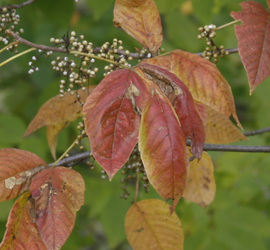
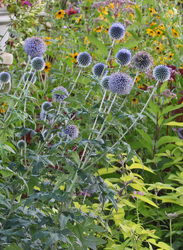
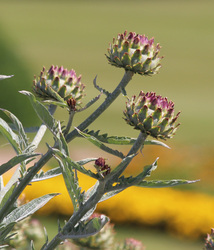
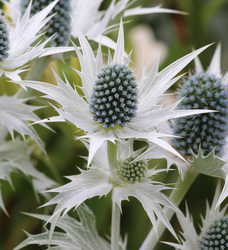
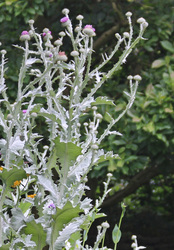
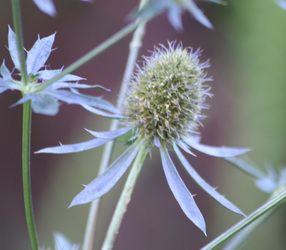
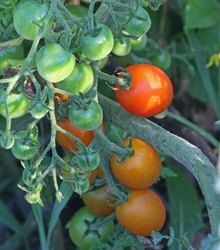
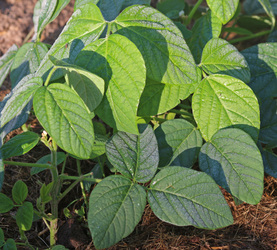
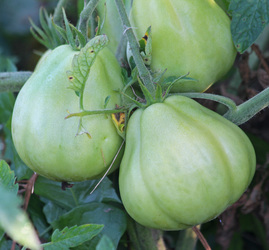



 RSS Feed
RSS Feed